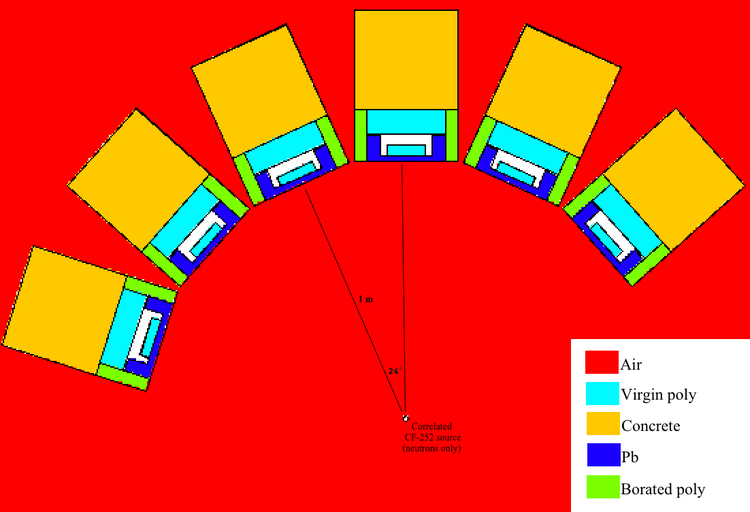CrossTalk
Go back MCNP simulations
Geometry
An array of 6 detectors are placed radially at a distance of 1 meter from an uncorrelated 252-CF source. The image below shows a top down view of the simulation geometry. The detector setups have a vertical extent of 30".
Detector physics
The detector physics used in the simulation is MCNP-POLIMI's default treatment of plastic organic scintillators. POLIMI uses electron equivalent light output (MeVee) for simulating detector responses. I assumed the detectors have a neutron energy deposition threshold of 0.2 MeV, giving an equivalent light output threshold of 0.03 MeVee.
Neutron energy deposition from collisions with both hydrogen and carbon are converted to electron equivalent light output (MeVee). All neutron collisions that occur within the pulse collection time window of 10 ns of one another are summed together. If the cumulative light output of a pulse exceeds the 0.03 MeVee threshold, then a detection is registered. The value 0.03 MeVee was chosen because it corresponds to a mean neutron energy deposit of 0.2 MeV.
Statistics
POLIMI was used to simulate a correlated CF-252 SF source.
Result
Out of source particles there were singles and crosstalk events. This gives a signal-to-noise-ratio (defined above) of 8.6.
Go back MCNP simulations
